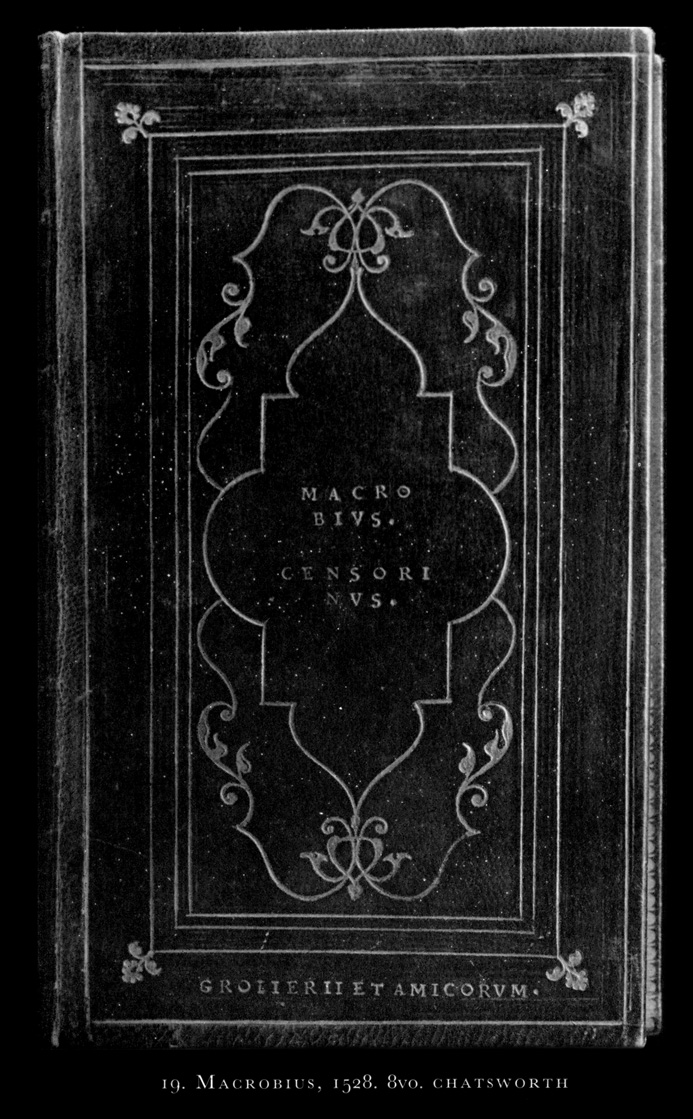

| In 1965 there was perhaps no greater expert than H. M. Nixon on the bookbindings of the famous bibliophile Jean Grolier. In his book Bookbindings from the Library of Jean Grolier. A Loan Exhibition, 23 September-31 October, 1965. (Catalogue Prepared by H. M. Nixon) published by the British Museum, he reproduces 138 Grolier bindings as well as catalogue of the gold tooled imprints . On Plate XIX we find a possibly early binding by Jean Picard, I have reproduced this binding above it imitates closely bindings by the Fleur-de-lis Binder. It is unusual in that the corner fleuron is one that was not catalogued by Nixon with a rubbing, he lists it as C. de P. 1***. At the time of his research no one had heard of Jean Picard, A documentalist, Annie Parent Charon was the first to point out the existence of Picard and his close business relationship with Grolier, in her 1974 book LES METIERS DU LIVRE A PARIS au XVIe siècle (1535-1560). Nixon assumed that Claude de Picques was Grolier's binder after the Fleur-de-lis Binder, thus the bindings and tools he attributed to Picques, were actually those of Picard. C. de P. 1 can now be thought of as Jean Picard 1. As we see in many auction catalogues, old and new references to these tools with the Nixon numeration, I doubt that it would be of much use to attempt to change this now however confusing these old C. de P. numbers it might be. In Comparative Diagram 1, shown below I show this unusual Picard tool 1*** and well as the standard C. de P. 1 rubbing by Nixon. |
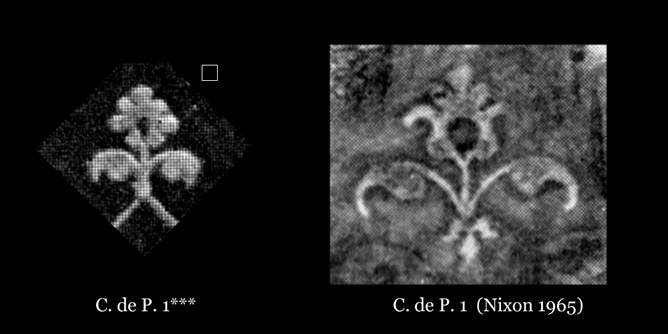
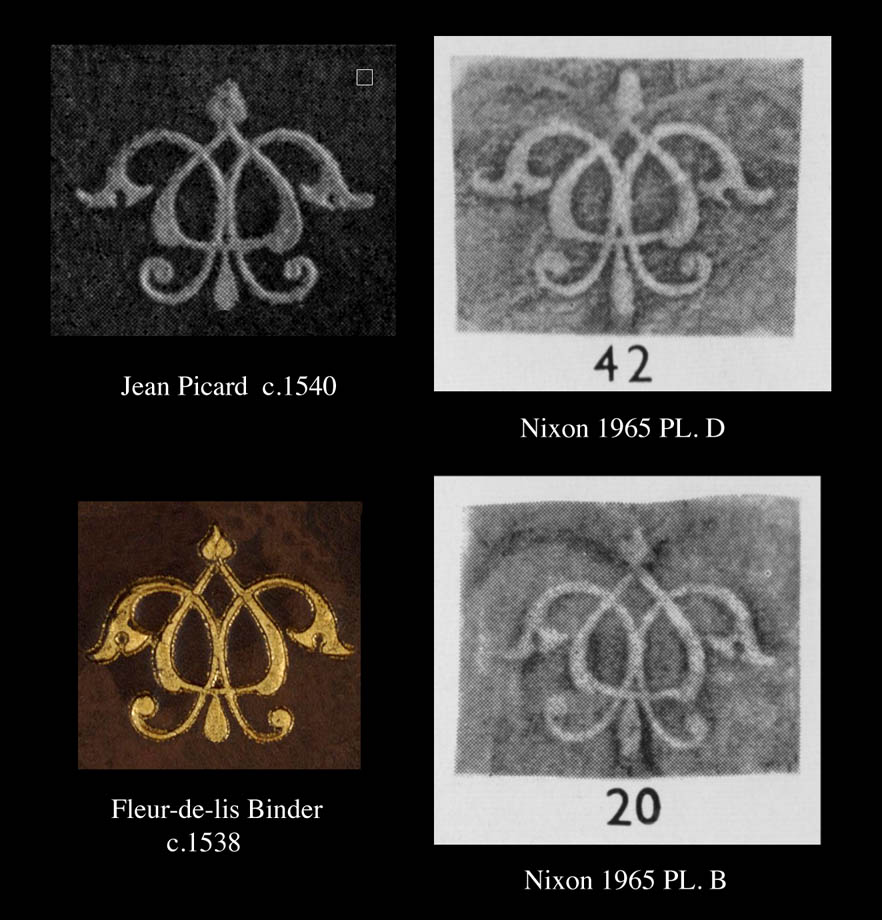
| I searched high and low for a good Picard imprint for Comparative Diagram 2. While you might think you have seen many, they were all Fleur-de-lis Binder examples. After checking 34 BnF Picard examples and a dozen or so BLDB examples I found not a single imprint of this type by Picard. In Nixon's book that covers 67 Picard bindings with solid tools, only two bindings (numbers 19 and 52) have imprints of this type. I found a third amongst Brunet's photogravure plates, shown below much reduced in size due to the fact it is a large folio sized binding. |
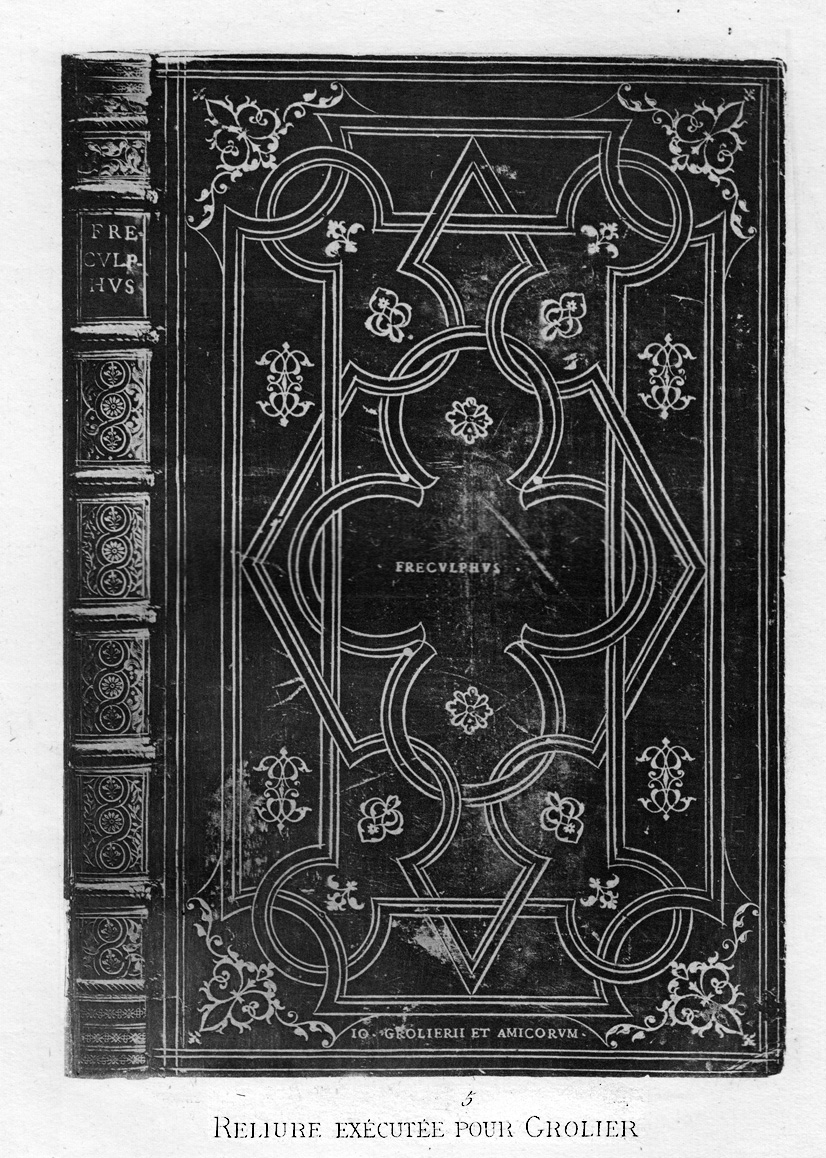
| The 1884 book La Reliure ancienne et moderne by Gustave Brunet with 116 binding reproductions, many of which were produced by the photogravure process, is available at Wikisource (click here to see this book.). Wikisource has had the great idea to put this online but have opted to show smaller than actual size reproductions of the plates, which is not so useful for imprint research purposes. However I want to remind everyone who imagines that in this modern day and age we have superior everything compared to the technology of a hundred years ago i.e. before airplanes and cars. Modern technology is a farce when it comes to printing photographs, if you enlarge a printed picture you will only discover a grid of small dots. In 1884 they knew how to truly reproduce a photograph, when you enlarge a photogravure you do not lose definition, therefore they are vastly superior to anything printed today. Thus even in this very large folio sized binding reproduced by Brunet we can still see the detail of this important Picard imprint |
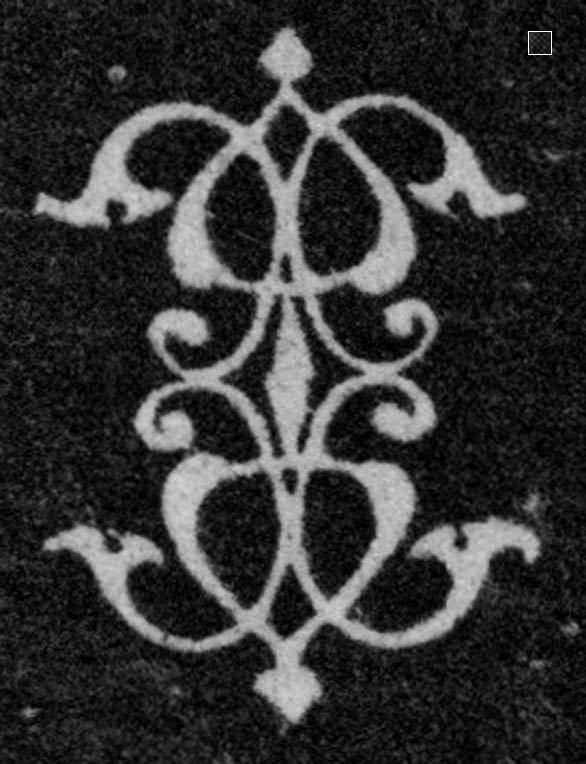
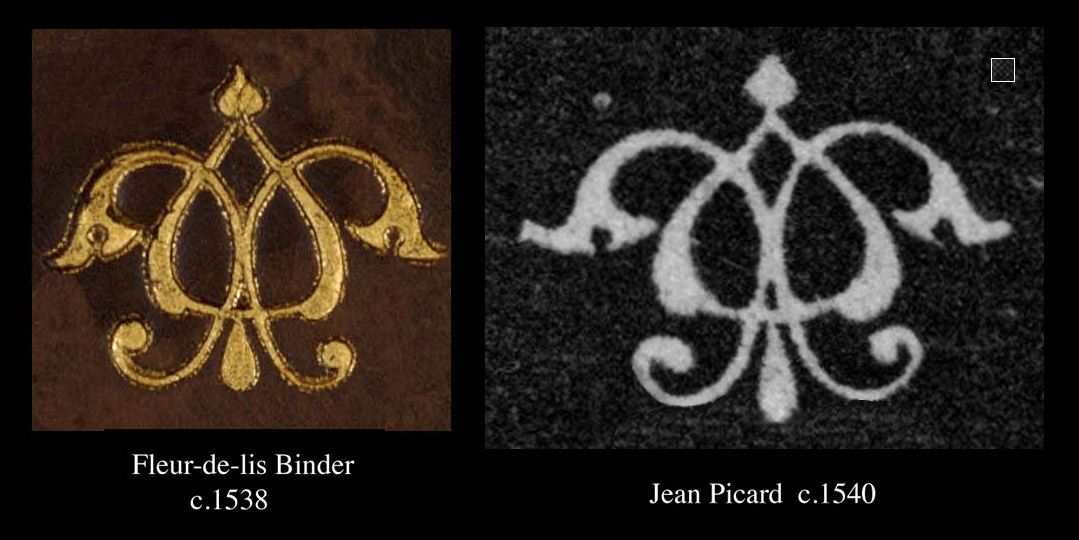
| If you come across a binding decorated with one of the imprints shown in Comparative Diagram 3, you will probably not find it easy to decide if it is a Picard or Fleur-de-lis Binder imprint. Odds are that it will not be a Picard as there are very few examples (3 in 100?) but we must not forget Roffet who also had one of these tools. |
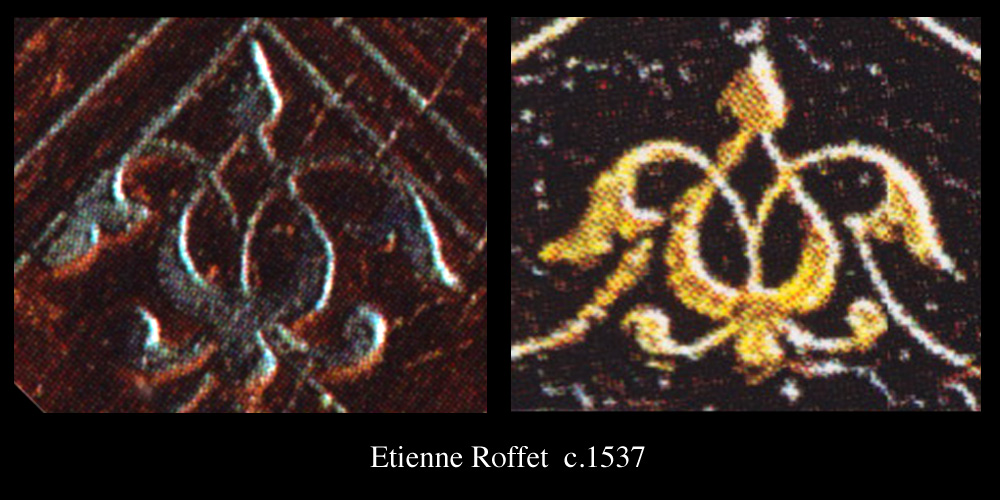
| The experts at the Biblithèque nationale de France are so sure that the Fleur-de-lis Binder and Étienne Roffet are one and the same, that when you search their site for Roffet bindings, of the 4 examples shown, the first three are bindings by Fleur-de-lis binder! It is probalbly imprints such the ones shown in Comparative Diagram 4, that has them confused. Although this looks very much like the imprint EF. 20, after the enlargement of these imprints, we can clearly see that the legs of the Roffet examples are much shorter. Note the quality of the image of the Roffet imprints compared to the photogravure of Brunet. The Roffet imprints come from an expensive, top of the line, 21 century publication! |
| information about the author | return to the home page of VIRTUAL BOOKBINDING |